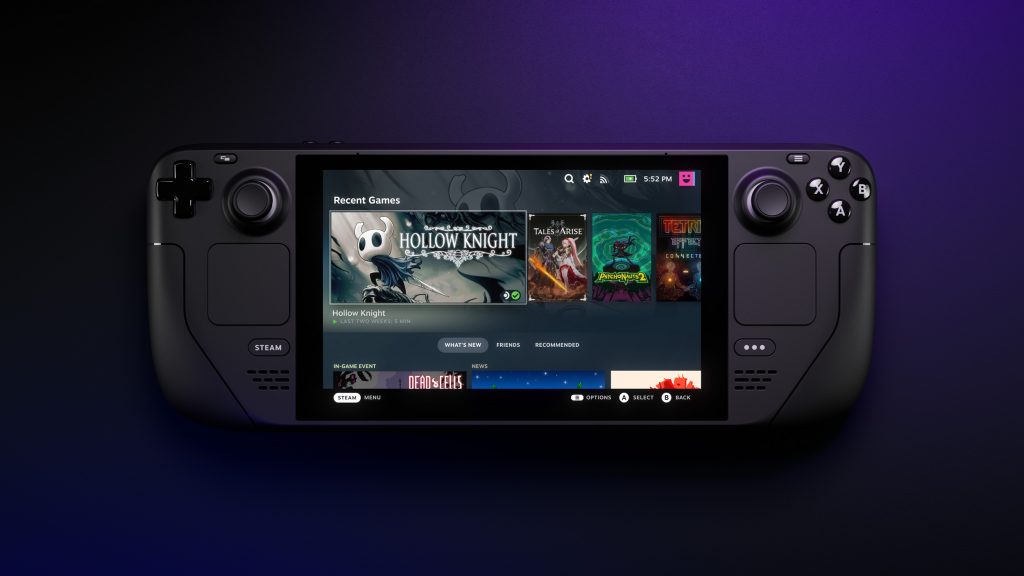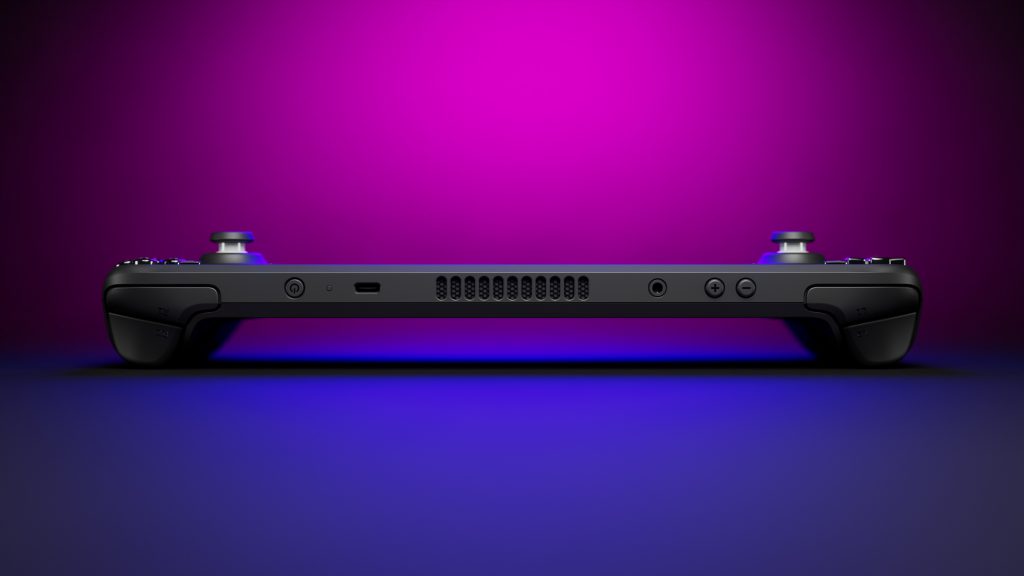Whether you’re a PC gamer, or a console player looking to dabble in PC gaming, it’s an intriguing proposition that you’re able to take full-fledged PC games on the go; and while there are limitations and questionable choices made by Valve, the Steam Deck (mostly) achieves this lofty goal of taking your PC games on the go.
First Impressions

When I got my hands on the Steam Deck, the first thing I noticed is how light it is. It’s most certainly heavier than the Nintendo Switch, but considering its bigger size, I was expecting it to be heavier than it is. It was comfortable to hold for an extended gaming session.
Upon booting up, I ran into some slight issues with the setup. While a quick internet tutorial helped me fix it, it highlights my biggest pain point with this very early, and that’s that it’s most certainly something you will need to look at tutorials and troubleshoot. Valve is a great company, but they are almost seemingly abstaining from much in the way of Tech Support. So instead, places like YouTube and Reddit provided me with answers. If you’re a PC user and have had to do things in the past, this is probably not something you’re too unfamiliar with. But I can see some people getting confused when Valve doesn’t directly have answers to why these things are happening.
Downloading And Playing Games
I started downloading some games to test. From my Library, I decided to install Deathloop, GTA V, Elden Ring, Dead Cells, Mass Effect: The Legendary Edition, Portal, and Sonic Adventure 2.
Immediately I was hit by what was considered awful download speeds. What made things worse is that as I’d leave the Deck to download these games, it would go to sleep and stop all downloads. I went to the settings and found that my downloads were being throttled by a setting that, by default, prioritizes Steam’s Remote Play feature. It’s a cool feature, but I also wanted to download games; I’m not sure why the company didn’t prompt and ask whether I wanted to prioritize one or the other; or better yet, what my power-saving settings would be. Disabling the throttle and disabling sleep mode (when plugged in) fixed this issue. Again, easily solvable, but baffling as to why it wasn’t made default the other way around, or even if they were to ask.
Design Overview

For the most part, I like the design of the Deck. Controls felt good in my testing of various games. The various functions all work surprisingly well. However, However, I find it weird that there is a physical headphone jack when most companies are shying away from that and moving towards Bluetooth. In possibly a controversial take, I would’ve preferred they leave the Headphone jack out and supplement it with an Ethernet port to speed up downloads. In my opinion, I’d rather have faster download speeds over, say, wired headphones.
That makes getting a USB-C Hub or Dock almost essential. I found myself limited with the downloads, but also with other things. There are no USB ports aside from the one USB-C for charging (or your dock/hub). I managed to order one off Amazon, but again it’s just one of those things where I wonder how much it’s going to confuse people who want a good out of box experience and find they have to fiddle with settings that are confusingly set to default, or not including things that actually make the experience enjoyable.
Gameplay Experiences

Once I got into my games, however, I was having a good time. Some games (Deathloop, Elden Ring, Dead Cells, Portal) ran intuitively with no issues. I also noticed that the framerate and overall performance were solid. My other games (Mass Effect: The Legendary Edition, GTA V, and Sonic Adventure 2) ran OK but with minor issues. Most of these issues seemed tied to the simple fact that the game had a separate launcher that I couldn’t control with the thumbsticks/D-pad and had to use the touch screen/trackpads to navigate. Still, with Sonic Adventure 2, I noticed that it chose to use Keyboard controls by default. Once I switched to Gamepad, it worked relatively well.
Playing these games felt nice. I chose these games as they were a wide range of releases that would (ideally) show how well the Deck can play modern and older titles; the results were impressive. Valve and publishers/developers are adding new compatible titles regularly. So it seems like for most of these titles, it’s a matter of ‘when’ not ‘if.’ Still, noticeably, some 3rd party launchers (i.e., GOG) have said they will not support the Steam Deck.
Speaking on 3rd party programs. I was able to install Discord and other programs and intuitively add them to Steam. Valve runs a Proton tool, which runs Windows games/applications on the Deck. I wasn’t sure how well this would work and was prepared to install a small Windows partition. However, I was impressed enough with the Deck’s Linux OS and Proton that I didn’t feel necessary and stuck with Linux instead.
Conclusion
I’ve been excited to play with the Steam Deck, and largely, I can say that I’m pretty satisfied. Valve still has a long way to go to make this more intuitive and user-friendly, and I’d caution someone buying this who doesn’t have some technical expertise. Unlike a PS5 or Xbox Series X, this is not comparably ready as an ‘out of the box’ experience. It requires tuning, and tweaking, and playing around with it. I never found myself hitting limits I couldn’t overcome. Still, I certainly think this could be daunting for someone who potentially doesn’t have a huge amount of technical experience tweaking PC settings.
It reminds me of the Raspberry Pi, all the rage six or so years ago. A small computer the size of a pack of cards that you could do a lot with. It had a lot of potential, but you needed to invest some time and technical expertise to make it work. The Deck is a bit more approachable, but I’d argue like the Raspberry Pi, it’ll take some tweaking to make it the console-killer many people (including myself) want it to be.
For more on gaming news, make sure to check back to That Hashtag Show.

![Steam Deck – Promising, But Needs Work [Review]](https://thathashtagshow.com/wp-content/uploads/2022/04/278564357_1050432512211470_79534020279628674_n-1200x640.png)
![Spy x Family Season 2 Ep. 7 “Who Is This Mission For?”: All Quiet On The Cruise Ship [Review]](https://thathashtagshow.com/wp-content/uploads/2023/12/372334463_405316928561335_4534193774139500282_n-440x264.jpg)


